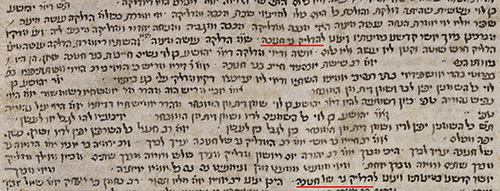


I read Rabbi Gil Student’s illuminating article (“The Mixed-Up Blessing on Chanukah Lights,’’ December 10, 2020) about how commentators explain Rav Yosef Karo’s deviation of the form of the blessing (“lehadlik ner Chanukah,” skipping out on the Gemara’s use of the word “shel”) with interest. I would advance an additional possibility: that Rav Karo did not deviate at all. While our printed Talmudic text, as well as Ktav Yad Venetzia, Italia and Vatican all have “shel Chanukah,” the evidence in other manuscripts is more complicated.
The blessing appears twice in Shabbat 23a, first where the Gemara uses the form of the blessing (“lehadlik”) to show that the mitzvah is in the lighting rather than the placing, and later when the Gemara analyzes where Hashem commanded us (“vetzivanu”). Ktav Yad Minkin (the only complete manuscript we have of Talmud Bavli) actually omits the word “shel” in the first occurrence, matching Rav Karo’s nusach. In the second occurrence, it includes the word “shel.”
Similarly, the Rambam and Maharshal’s nusach, “she-la-Chanukkah” as one word, is the variant that is found in Ktav Yad Freidberg, in both occurrences as well.
In the fragmentary Or. 5558 N/50 manuscript, the first occurrence appears as “she-la-Chanukah,” as the Rambam’s single word, and the second occurrence as the abbreviation n”Ch, matching Rav Karo’s omission of the word “shel.”
In turn, this can resolve the Zichron Avraham’s strong objection that we cannot deviate from the Gemara, the highest authority, even based on all the explanations and speculations in the world. Ultimately, no one is deviating from the nusach found in the Gemara.











